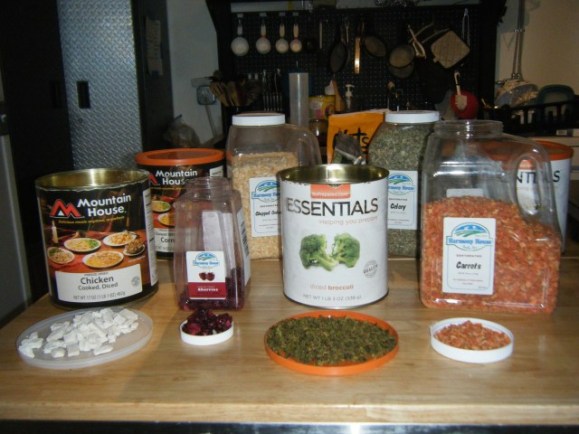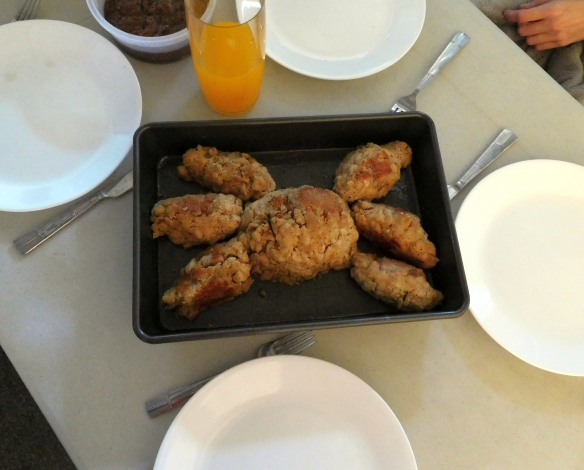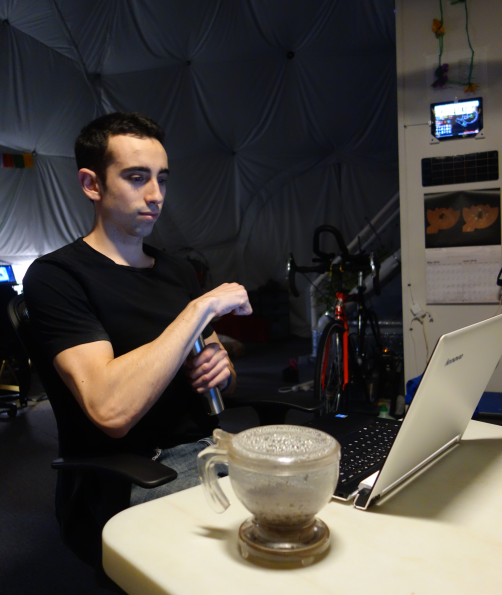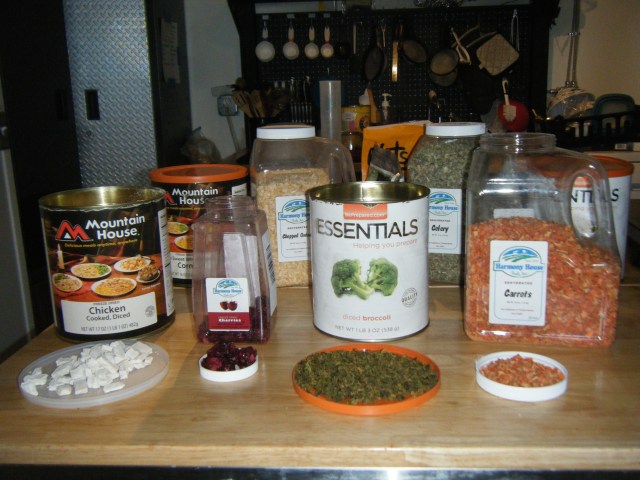[Version française sur le site de La Recherche]
What question do you think people would ask you most often if you were taking part in a scientific simulation of a Mars mission? « What scientific experiments are you conducting? » « How close are we to the real journey? » « What benefits are expected for life on Earth? » No. The most frequent questions deal with what we eat, our body odor and our sex life.
It surprised me at first, but I could have expected it. After all, a mission to Mars is so far from most people’s everyday life that it can feel abstract. Yes, some readers may be interested in the mission on a purely intellectual basis, but I assume that those who are reading my posts in slippers and jogging pants, after a long day at work, would rather read about something they can relate to.
So, let’s talk about it: what’s for dinner?
No juicy barbecue ribs, unfortunately. As there is no Walmart between Earth and Mars, all the food we packed is shelf-stable. Vegetables are freeze-dried, meat comes as cubes to rehydrate, fruits are dryer that in your muesli, and orange juice is powdered – as are milk and eggs. Here we don’t mince, we rehydrate. We also have fresh food produced on site by plants and microbes, but that represents only a small fraction of our diet.

As shelf-stable food can quickly become boring, we innovate. We play with spices, shapes, and the endless possibilities brought by the unusual forms taken by our food items. As an example: a roasted turkey can be made by amalgamating rehydrated turkey cubes. But why would one recreate a standard turkey when they can solve a problem that tears families apart? I created a six-legged turkey, and trust me: there has been no fight over who would get a leg.

Who cooks? Everyone: each of us covers one day of the week, and the seventh day is for leftovers. It’s quite entertaining, by the way, to see how everyone deals with food. We come from very different cultures, and it is particularly obvious in the kitchen and around the table.
Carmel and Tristan cook together. Days when they handle spatulas are those when we eat the healthiest, as both put great efforts into staying fit. It doesn’t prevent them from cooking the tastiest food of the week: lasagna, sauce dishes, gratins, muffins, light and fluffy bread… All this with rehydrated stuff. They greatly reduce sugar and fat amounts but, as they start from American versions of recipes, it just tastes like regular food to European crewmembers.
Christiane hates cooking, so she always picks a dish among the four she can make in no time: mashed potatoes, pasta, rice or soup, with the associated sauce. Lots of sauce; actually, to me, it’s always soup. Her dietary concerns are the opposite of Tristan and Carmel’s: far from big in the beginning of the mission, she tends to lose weight because of meal monotony and because she does not appreciate everyone’s cooking. She tries to compensate with cookies, pretzels and candies, but with little success. What do you mean, you hate her ?
Sheyna is the crewmember who spends the largest amount of time in the kitchen. When it’s her day, all surfaces are covered with utensils and food items. The dome is filled with the sound of spoons hitting pots, food items thrown together, and oil frying in pans. Outside her cooking day, she is often found her hands in flour, making bread. This bread is so dense that one slice can feed a man for a day; perfect before a 6-hour EVA. She is also responsible for one of the best meals we’ve had here: sushis. Spam does not replace fresh salmon but hey, after months here, you become less demanding.
Andrzej prepares a brunch every Sunday morning. Always the same thing, always the same way: tortillas, while listening to metal and shaking his head in time with the music. For some reason, he puts on a Spanish accent at the same time as his apron. In the evening, he cooks what he calls “comfort food”. Unfortunately, comfort food to someone is not necessarily comfort food to someone else: as tasty as they are, his beef biscuits and meatloaves do not exactly remind me of my Parisian childhood. Another thing to know: he is the only person I know who wears safety goggles when cooking onions.
As for myself, I experiment. My cooking has met a few successes, such as a delicious French king’s cake made from powdered ingredients and water, but also a few failures. I mentioned the bûche de Noël (“Christmas log”) incident in a previous post. Another example that comes to my mind is the quiche where I mistook sugar for sour cream. Yes, really. In my defense, our sour cream is powdered. Fortunately, I have the advantage of being French: even my worst creations are presumed tasteful and sophisticated, as far as I introduce them with confidence. It reminds me of a professional dinner in Germany, a few years ago. We tasted a wine. All my German colleagues looked at me, stone-faced. Having no oenological knowledge whatsoever at that time, I displayed a very serious face, raised an eyebrow, and said: “Not bad”. The others adopted the same serious expression, the same lip movement, and repeated: “Yeah, not bad”.
The first explorers on Mars will likely have a similar diet as ours. Later crews may, however, cultivate a larger part of their food: while bringing enough food for a one-year-and-a-half mission is less expensive than starting farms on Mars, the investment becomes worth it as missions get longer. Where exactly the threshold is depends on the technologies used. The CyBLiSS project will hopefully bring this threshold towards shorter missions.
Generally speaking, I would not recommend Mars for its gastronomy. But as far as I am concerned, if the coffee is good, no problem.





